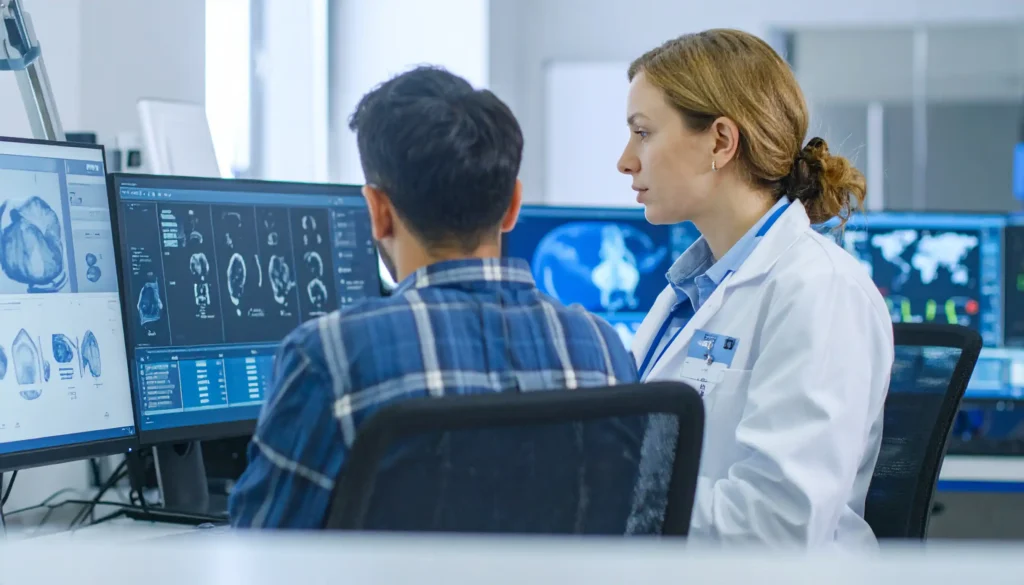
Enabling Safe, Targeted Delivery of ALS Cell Therapy
Custom stereotactic injection device powers first-in-human trials
A leading research institution tackling the challenge of motor neuron degeneration in ALS developed a novel approach to treatment: deliver GDNF-secreting neural progenitor cells directly into the spinal cord to provide sustained neurotrophic support. To bring this concept into human trials, the client set out to develop a surgical delivery system that combined precision, procedural control, and regulatory readiness for use in a complex anatomical environment. That required a partner with deep experience in novel medical device development, fluency in clinical and regulatory demands, and the engineering skill to turn a first-of-its-kind concept into a reliable surgical platform. They chose StarFish Medical.
Designing for the Realities of Spinal Delivery
The work ahead was complex and unforgiving. They needed a system that could deliver precision, control, and adaptability in one of the most challenging anatomical environments in medicine.
The therapeutic cells had to be delivered with precision and exacting distribution into a moving, high-risk anatomical target that tolerates little deviation. Meeting that challenge meant designing a system that could stabilize externally by engaging adjacent spinus processes while dynamically compensating for movement at the point of delivery. StarFish began by aligning the surgical, mechanical, and biological requirements, working with the client to translate a bold therapeutic strategy into a clinical-stage platform.
The spinal cord is already one of the most challenging environments for therapeutic delivery. In this case, the target sat deep in the ventral horn of the lumbar spine and demanded sub-millimetric accuracy to avoid damaging sensitive neural structures. The system had to compensate for micromotion induced by pulmonary and cardiac motion without compromising trajectory or depth. Existing surgical tools weren’t designed to meet those requirements.
StarFish responded with a system built specifically for this challenge. The solution combined rigid external stabilization with flexibility at the point of delivery, allowing the procedure to proceed safely despite ongoing physiological motion. At the heart of that approach was a custom stereotactic injection platform designed to meet both surgical and biological demands.

From Research Concept to Clinical-Grade System
With the core architecture defined, StarFish advanced the system as a combination product, integrating biocompatibility, sterilization, reprocessing, and packaging requirements from the outset. The team completed verification and validation testing, assembled the Design History File, and manufactured clinical-grade devices for first-in-human use.
In early clinical use, the system performed as designed. The surgical team achieved precise delivery, and patients tolerated the procedure well. Results from the trial were published in Nature Medicine, confirming the feasibility of delivering GDNF-secreting progenitor cells using a purpose-built surgical system (doi.org/10.1038/s41591-022-01956-3). While the trial focused on procedural safety, it marked an important milestone in demonstrating the clinical potential of cell-based therapies for neurodegenerative disease.
As the program advances through ongoing studies, StarFish continues to support development, refinement, and readiness for future phases. The delivery system developed through this collaboration didn’t just enable a single trial. It created a technical foundation the client is now building on to expand therapeutic potential and pursue broader clinical impact.

A Platform for CNS-Targeted Cell Therapy
This project reinforces an emerging truth in regenerative medicine: delivery is inseparable from therapeutic success. For patients, precise delivery to the spinal cord could mean longer function and slower progression. For clinicians, it provides a stable, reliable method for administering complex therapies. And for medtech innovators, it demonstrates how engineering strategy and device design can determine whether bold scientific ideas make it to the bedside.
FAQ
What is the ALS spinal injection device used for?
It enables direct spinal cord delivery of GDNF-secreting neural progenitor cells to treat ALS at the site of neurodegeneration.
How does the system manage spinal movement during surgery?
The platform stabilizes externally, while a floating cannula tip compensates for internal motion caused by breathing and cardiac cycles.
What was StarFish Medical’s contribution?
StarFish designed, developed, validated, and manufactured the delivery system, and supported clinical readiness as a combination product.
Was the therapy effective?
The trial focused on safety and procedural feasibility, both of which were successfully demonstrated and published in Nature Medicine.
Why is this significant for CNS therapies?
It proves that complex cell therapies can be delivered safely and precisely to the spinal cord, paving the way for future CNS-targeted therapeutics.